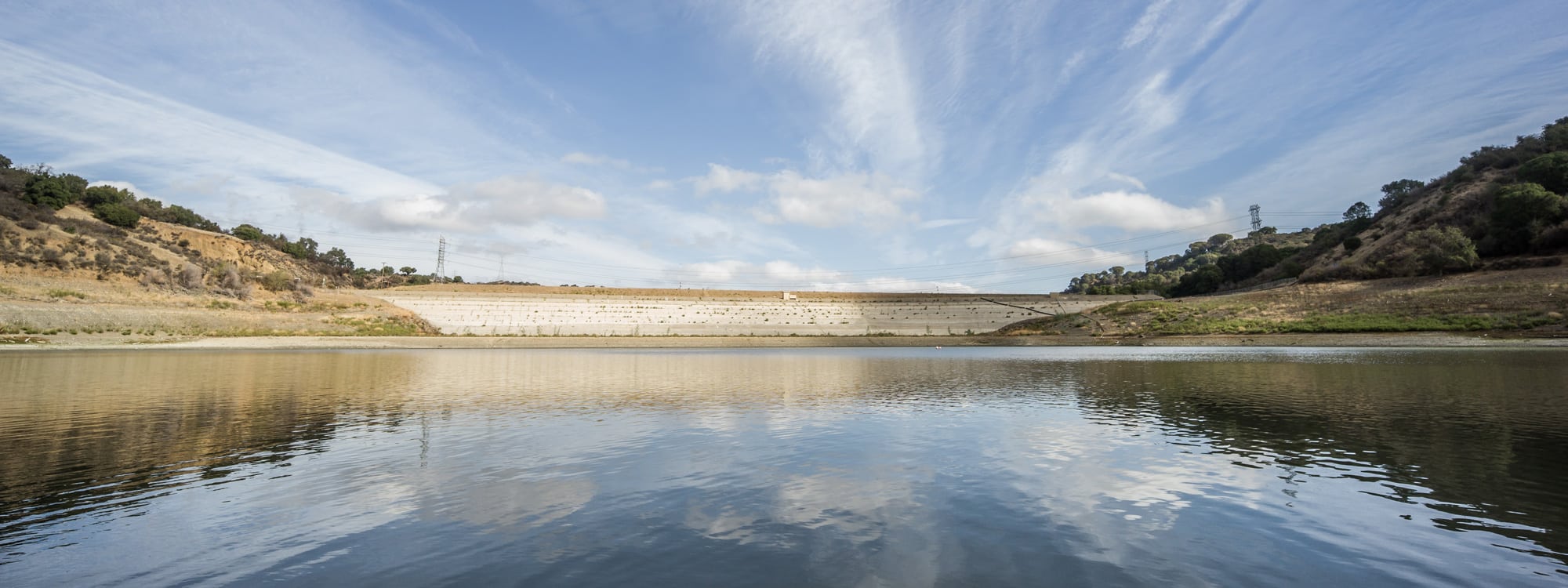Healthy Bay Area watersheds are fundamental to safeguarding California’s limited water resources, now under increasing strain from development and climate change.
They filter the region’s water supply—creeks and rivers collect rain and runoff, carrying the water to the bay, and filling underground aquifers and reservoirs along the way. Conserving and managing these lands will help ensure adequate supplies of water for people, provide protection from flood damage and habitat for wildlife, as well as prepare us for climate change and sea level rise. Silicon Valley’s innovative economy depends on wise watershed stewardship.
The Santa Clara Valley Water District manages an integrated water resources system that keeps our creeks and ecosystems healthy for nearly 2 million residents. Santa Clara County is home to significant watersheds: the Coyote, Guadalupe, Lower Peninsula, West Valley and Uvas/Llagas watersheds. In addition to the five watersheds, the county’s water system includes 800 miles of streams, 400 acres of groundwater recharge ponds, 10 dams and surface water reservoirs, 3 drinking water treatment plants, and 2 groundwater sub-basins.
In order to manage all of this, the water district is developing an integrated water resources master plan (it needs a better name!). Each watershed will get its own master plan—a process that will take up to four years to —and each plan will address several water resource functions including:
- Water supply [PDF map]
- Water quality [PDF map]
- Flood protection [PDF map]
- Fisheries [PDF map]
- Wildlife [PDF map]
- Vegetation [PDF map]
- Open space [PDF map]
- Trails and recreation
- Historical ecology and native people
- Land use
- Climate change
Each plan will include a lay of the land for where water resources stand today, a vision for the future of the watershed, and an action plan to achieve that vision.
These five watersheds are part of Santa Clara County’s natural capital. They provide economic benefits, called “ecosystem services”, like clean water, flood protection, clean air, healthy food, recreation, and climate stability. For the first time ever, the economic value of these ecosystem services for Santa Clara County was calculated [PDF report] and found to be between $162 billion and $386 billion.
Built infrastructure (e.g. roads and bridges) depreciates over time, but natural capital is self-sustaining and when protected, increases in value over time. So when it comes to planning for Santa Clara County’s watersheds, we should all have an eye towards investing in our green infrastructure (our hillsides, creeks, and rivers), which provides a much better return on investment.
While the Santa Clara Valley Water District plans and manages at the county level, each city has a role to play as well. Find out how you can get involved in San Jose below.
For more information on the Santa Clara Valley Water District’s Integrated Water Resources Master Plan, contact Brian Mendenhall at 408-630-3093.
Take action in San Jose
In the City of San Jose, development is not allowed within 100 feet of a riparian habitat area—areas along natural streams—as determined by the City’s Riparian Corridor Policy Study. However, the study’s guidelines lack teeth and are not well-defined. This leads to time-consuming debates over what is permissible and occasionally, to developments that encroach on and degrade riparian habitat. In order to ensure consistent application of the policy, it needs to be codified into ordinance language for the City Council’s approval.
Riparian zones provide critical habitat for wildlife, filter stormwater run-off, and provide flood protection naturally. San Jose has many streams, creeks and rivers running through it, and better protections for these valuable resources are needed.
The San Jose Riparian Advocates is a committee of environmental organizations and involved community members who are interested in the preservation and protection of the habitat in and alongside San Jose’s streams and creeks. This group is requesting that Mayor Liccardo and the Council Rules Committee direct planning staff to start the process of crafting an ordinance. This begins with bringing an overview of the issue to the June Transportation and Environment Committee.
Contact Larry Ames to learn more or join the Yahoo Group.
photo: Gordon-Shukwit via Flickr




